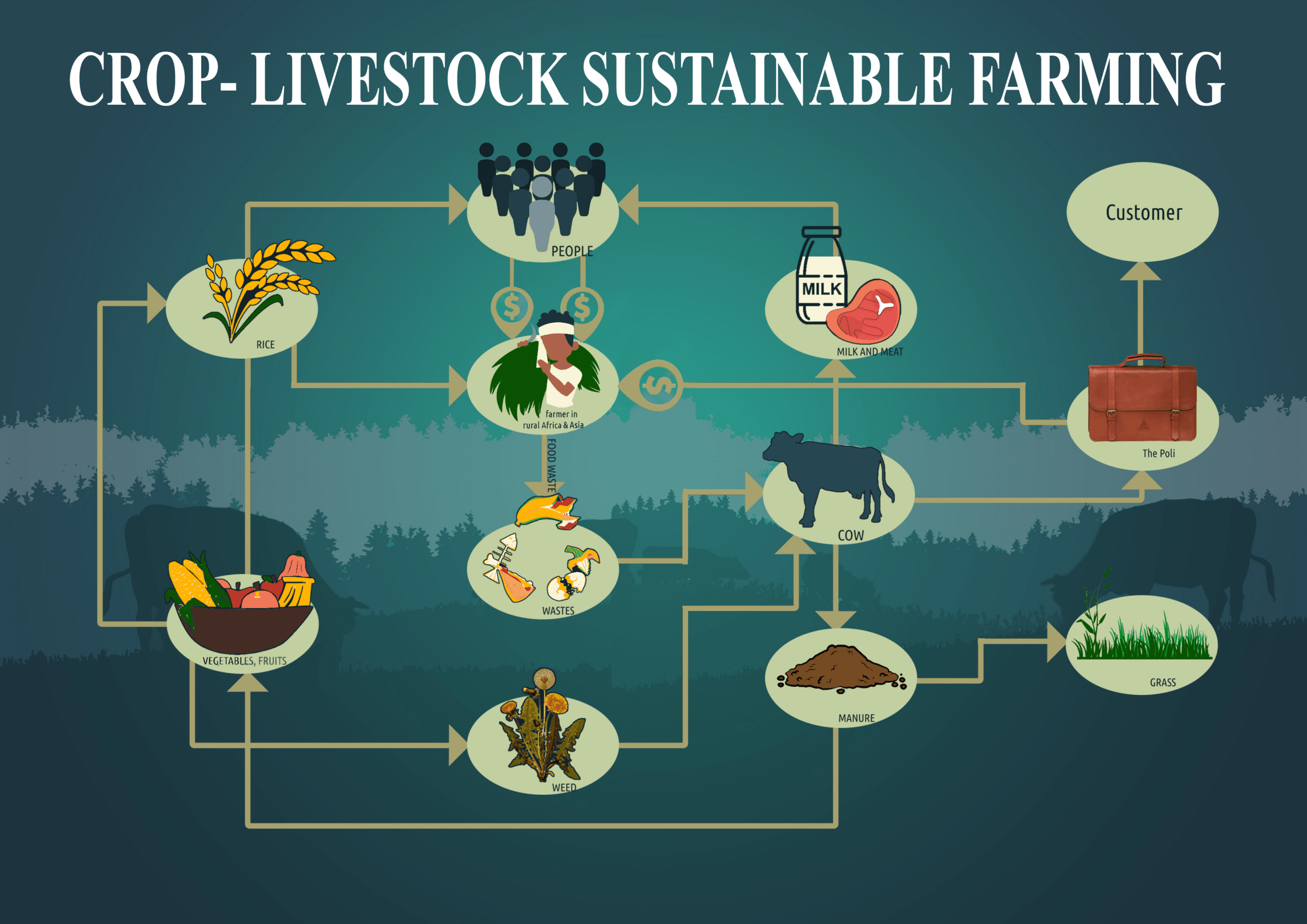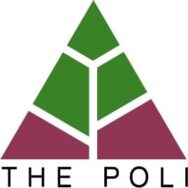By Mohammad Azim and Oscar Granström
Plant-based diets are becoming increasingly popular in developed countries. One of the main reasons is that livestock farming, the farming method used by most meat and dairy companies, is strongly linked to adverse environmental impacts.
The largest meat and dairy companies emit huge greenhouse gas emissions and generate a lot of waste in the environment. As an example, the top 20 meat and dairy companies emitted more greenhouse gas than all of Germany in 2016. It is estimated that livestock production contributes 15% of all greenhouse gas emissions. This is a higher percentage than all the gas-burning cars, trucks, ships, and planes in the transportation sector.
However, in contrast to the climate threats posed by big meat and dairy conglomerates, there are enormous social, economic, and environmental benefits offered by agro-ecology-based sustainable crop-livestock farming, where circularity is central. These kinds of traditional knowledge-based farming are more common in rural Asia and Africa.
As an example, in the Indian continent, many rural agriculture-based small-holder farmers raise cows as part of their way of life: families, women, widows, fisher folks, indigenous people, and pastoral communities. The typical diet for such cows includes residual straw from rice paddies, wheat fields, grasses, and other nutritious byproducts from agriculture. Cow manure is used as a source of organic fertilizers in crop fields. They can help to replace chemical fertilizers and increase soil fertility and crop production. Manure can supply more nitrogen, a primary element of plant growth, than any synthetic fertilizers. Some rural people also use dried cow dung as a source of fuel to cook food etc., where other kinds of energy sources are limited. Sometimes cow dung is applied to the walls and floors to insulate the home in rural areas.
Sustainable animal-crop farming ensures the recycling of nutrients, biomass, and resources within the production system. This style of farming can contribute to growing the food that a community needs, especially during climate change. The families feed on the milk derived from their household cows. The extra milk they can sell to neighbors. The farmers can get cash after selling mature cattle in the local market. They can spend the money on other priorities such as education and medical treatment. Small-scale farming can supply moderate meat requirements as a source of protein to the rural community. The leather byproduct is processed to produce bags, shoes, etc. This helps to earn money for many low-income people.

Figure: Illustrating the self-sustaining nature of the crop-livestock circular system, which generates economic value for farmers and supplies food to the community. This circular approach effectively neutralizes CO2 emissions, presenting a notable advantage over industrial livestock production, which accounts for 15% of all greenhouse gas emissions.
Unlike big dairy and meat corporations, small-scale agroecology farming requires a low level of naturally derived input such as soil and water, and can ensure a sustainable balance between food production and natural resources. UK-based organization ‘Send a Cow’ is promoting sustainable, organic, and bio-diverse crop-animal farming in Sub-Saharan Africa. They estimated that, in such a livestock production system, 0.5 ha of trees planted for fodder can offset the greenhouse gas emitted by a cow, which underscores the immense potential of this farming method in mitigating climate change ( Send A Cow, 2021).
How crop-livestock sustainable farming contributes to the UN’s Sustainable Development Goals:
• Agroecology-based animal farming helps to build a resilient livelihood for millions of people around the world, which supports the United Nations Sustainable Development Goals (SDGs) no. 13: ‘communities adapting to climate change effectively and restoring ecosystems for current and future generations.
• Most people consume more protein than they need in rich countries. However, access to such diverse nutritious diets is not available in the rural part of developing Asia and Africa. In such cases, household livestock farming can help rural communities in preventing malnutrition-related problems by supplying high-quality protein. Moreover, extreme events such as drought threaten food security in some of the world’s most climate-vulnerable countries. Therefore traditional crop-livestock farming fulfills SDGs no. 2, which says “to end hunger, achieve food security, improve nutrition and promote sustainable agriculture”.
Summary:
References
FAO, 2018. The 10 elements of Agroecology. Guiding the transition to sustainable food and agricultural systems. Available at https://www.fao.org/3/i9037en/i9037en.pdf.
Scherf, B. Agroecology – a pathway to achieving the SDGs. pp. 1-28. A report from Food and Agriculture Organization. Available at https://www.rural21.com/fileadmin/downloads/2018/en-02/rural2018_02-S14-16.pdf.
Send A Cow, 2021. Climate Position Statement. Available at https://assets.sendacow.org/climate_position_statement_2021.pdf.
Heinrich Böll Foundation, Institute for Agriculture & Trade Policy Europe and GRAIN; 2017. Big meat and dairy’s supersized climate footprint. Available at https://grain.org/article/entries/5825-big-meat-and-dairy-s-supersized-climate-footprint.
* The Author Mohammad Azim is a Founder of The Poli AB. He studied at Stockholm University for a Master’s program in Environmental Science. The Co-Author Oscar Granström is a Co-Founder of The Poli AB. He did a Master’s in Business Administration from Stockholm University.
